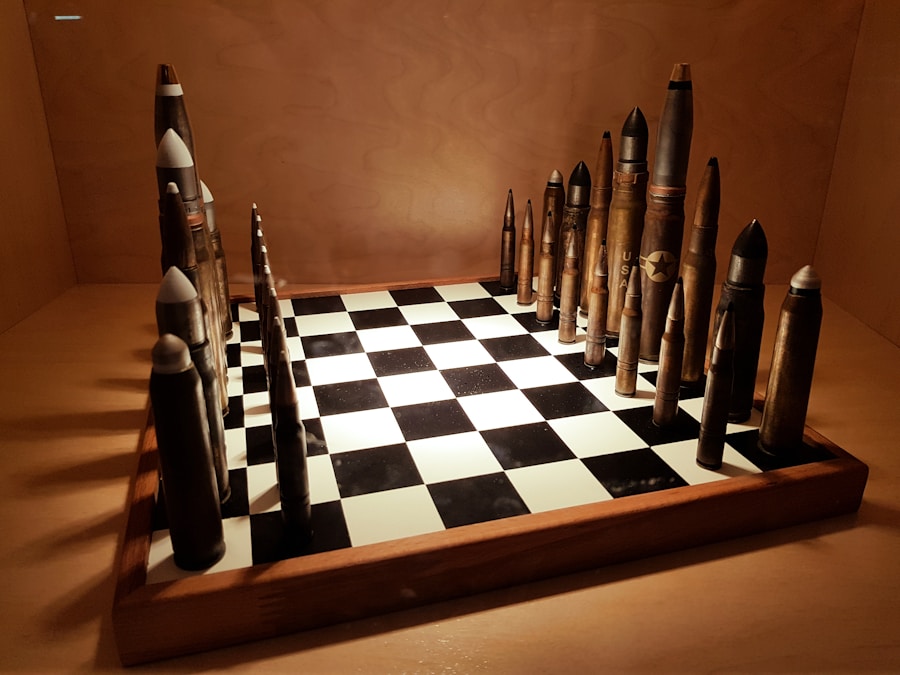Download links
How to install Mastering Chess: Strategies for Victory APK?
1. Tap the downloaded Mastering Chess: Strategies for Victory APK file.
2. Touch install.
3. Follow the steps on the screen.
Description
Chess is a strategic board game that has captivated minds for centuries, originating in India around the 6th century AD before evolving into its modern form in Europe. The game is played on an 8×8 grid, known as a chessboard, where two players command an army of 16 pieces each: one side is white, and the other is black. Each player’s army consists of one king, one queen, two rooks, two knights, two bishops, and eight pawns.
The objective is to checkmate the opponent’s king, which means putting it in a position where it cannot escape capture. Understanding the movement and capabilities of each piece is fundamental to mastering chess. The king moves one square in any direction, while the queen can traverse any number of squares in any direction.
Rooks move horizontally or vertically, bishops move diagonally, knights have a unique L-shaped movement, and pawns advance forward but capture diagonally. Each piece has its strengths and weaknesses, and recognizing these can significantly influence a player’s strategy. For instance, while pawns may seem weak due to their limited movement, they can become powerful when promoted to a higher piece upon reaching the opponent’s back rank.
Key Takeaways
- Understanding the basics of chess is crucial for building a strong foundation in the game.
- Developing a strong opening repertoire is essential for gaining an early advantage and controlling the game.
- Mastering tactical and positional play is key to outmaneuvering opponents and creating winning opportunities.
- Creating a winning endgame strategy is important for converting advantages into victories.
- Improving decision-making skills is vital for making the right moves and capitalizing on opportunities during a game.
- Studying and analyzing grandmaster games can provide valuable insights and help improve overall chess skills.
Developing a Strong Opening Repertoire
A well-structured opening repertoire is crucial for any chess player aiming to improve their game. The opening phase sets the tone for the middle game and can often dictate the outcome of the match. Players must familiarize themselves with various opening strategies, such as the Ruy Lopez, Sicilian Defense, and Queen’s Gambit.
Each opening has its own set of principles and ideas that can lead to advantageous positions if executed correctly. For example, the Ruy Lopez, named after the Spanish priest Ruy López de Segura, begins with 1.e4 e5 2.Nf3 Nc6 3.Bb5. This opening aims to control the center of the board while developing pieces harmoniously.
On the other hand, the Sicilian Defense (1.e4 c5) is a counter-attacking opening that allows Black to challenge White’s central control while creating asymmetrical pawn structures that can lead to dynamic play.
Mastering Tactical and Positional Play

Tactical awareness is a cornerstone of chess mastery. Tactics involve short-term calculations that can lead to immediate gains, such as winning material or delivering checkmate. Common tactical motifs include forks, pins, skewers, discovered attacks, and double attacks.
For instance, a knight fork occurs when a knight simultaneously attacks two pieces, forcing the opponent to lose material. Recognizing these patterns and being able to calculate several moves ahead is essential for success in tactical situations. Positional play, on the other hand, focuses on long-term strategic advantages rather than immediate gains.
It involves understanding pawn structures, piece activity, and control of key squares. A player might choose to maintain a strong pawn center or create weaknesses in the opponent’s position that can be exploited later. For example, controlling open files with rooks or placing bishops on long diagonals can significantly enhance a player’s position over time.
source Balancing tactical opportunities with positional considerations is vital; a player who excels at tactics but neglects positional understanding may find themselves in trouble against a more strategically minded opponent.
Creating a Winning Endgame Strategy
| Endgame Strategy | Metrics |
|---|---|
| Market Share | Increasing market share by 10% within 12 months |
| Customer Retention | Improving customer retention rate by 15% in the next quarter |
| Profit Margin | Increasing profit margin by 5% by the end of the fiscal year |
| Competitive Analysis | Outperforming key competitors in at least 3 major markets |
The endgame is often where games are decided, and having a solid strategy for this phase can be the difference between victory and defeat. In the endgame, fewer pieces remain on the board, which means that precise calculation and understanding of fundamental concepts become paramount. Key principles include king activity, pawn promotion, and piece coordination.
The king transforms from a vulnerable piece into an active participant in the endgame; thus, centralizing the king can often lead to significant advantages. One classic example of endgame strategy is the concept of “opposition,” where one player positions their king directly opposite the opponent’s king with an odd number of squares between them. This positioning allows one player to control key squares and ultimately push their pawns toward promotion.
Additionally, understanding how to convert material advantages into a win is crucial; for instance, knowing how to checkmate with a king and rook against a lone king requires practice and familiarity with basic checkmating patterns.
Improving Your Decision-Making Skills
Chess is as much about decision-making as it is about strategy and tactics. Players must constantly evaluate their positions and make choices based on incomplete information. Developing strong decision-making skills involves analyzing various factors such as material balance, piece activity, king safety, and potential threats from the opponent.
A systematic approach to evaluating positions can help players make more informed decisions during critical moments in a game. One effective method for improving decision-making is to practice time management during games. Many players struggle with time pressure, leading to hasty decisions that can result in blunders.
By allocating time wisely throughout different phases of the game—spending more time on complex positions while being more decisive in simpler situations—players can enhance their overall performance. Additionally, reviewing past games to identify moments where poor decisions were made can provide valuable insights into personal weaknesses and areas for improvement.
Studying and Analyzing Grandmaster Games

Learning from the Best
One of the most effective ways to elevate one’s chess skills is by studying games played by grandmasters. These elite players often employ advanced strategies and tactics that can provide invaluable lessons for aspiring chess enthusiasts. Analyzing grandmaster games allows players to see how top-level competitors handle various openings, middlegame complexities, and endgame scenarios.
Understanding the Reasoning Behind the Moves
When studying these games, it’s beneficial to focus on understanding the reasoning behind each move rather than merely memorizing sequences. For instance, examining how grandmasters respond to specific openings can reveal strategic ideas that may not be immediately apparent from just playing through the moves. Additionally, many grandmaster games are accompanied by annotations that explain critical moments and alternative lines; these insights can deepen a player’s understanding of chess principles.
Leveraging Technology and Literature
Furthermore, utilizing modern technology can enhance this study process. Online databases allow players to access thousands of grandmaster games with ease, while software tools can analyze positions and suggest improvements. Engaging with chess literature that breaks down famous matches or explores specific themes can also provide context and deepen comprehension of complex ideas within the game.
Appreciating the Depth and Beauty of Chess
By immersing oneself in the world of grandmaster chess through study and analysis, players not only gain knowledge but also develop an appreciation for the depth and beauty of this timeless game.
If you’re a fan of strategy games like chess, you may also enjoy reading about the latest updates in the gaming world. Check out this article on PUBG Mobile, a popular battle royale game that requires strategic thinking and quick decision-making skills. Whether you prefer the classic game of chess or the fast-paced action of PUBG Mobile, both games offer a challenging and rewarding experience for players of all skill levels.
FAQs
What is chess?
Chess is a two-player strategy board game that is played on an 8×8 grid. It is one of the most popular and enduring games in the world, with a rich history dating back over 1500 years.
How is chess played?
Chess is played on a square board divided into 64 squares, with each player starting with 16 pieces: one king, one queen, two rooks, two knights, two bishops, and eight pawns. The objective of the game is to checkmate the opponent’s king, which means putting the king into a position where it cannot escape capture.
What are the basic rules of chess?
Each type of chess piece moves in a specific way: the king moves one square in any direction, the queen moves any number of squares in any direction, the rook moves any number of squares horizontally or vertically, the bishop moves any number of squares diagonally, the knight moves in an L-shape, and the pawn moves forward one square and captures diagonally. The game ends when a player’s king is in checkmate, or when a stalemate is reached.
What are the benefits of playing chess?
Chess has been shown to have numerous cognitive benefits, including improving memory, concentration, problem-solving skills, and strategic thinking. It is also a great way to improve patience and decision-making abilities.
What is the history of chess?
Chess originated in India around the 6th century and spread to Persia, where it became known as “shatranj.” It then spread to the Arab world and Europe, evolving into the modern game of chess that we know today. Chess has a rich and storied history, with many famous players and matches throughout the centuries.





